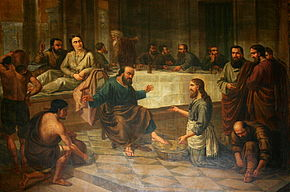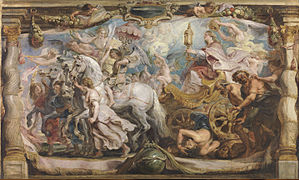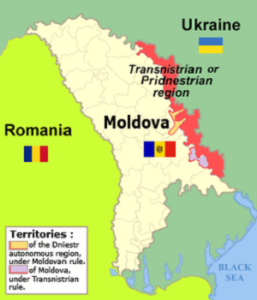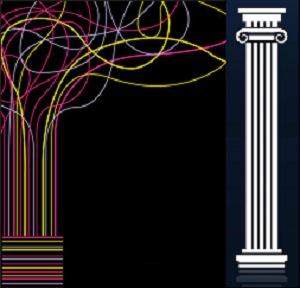
Arquivo para March, 2024
Pain and the Palliative Society
By reading several authors, but mainly by understanding precisely the “pains” of modernity, Byung Chul Han wrote the Paleative Society: pain Today (Han, 2021) in which he decrees: “Pain is now a meaningless evil, which must be combated with painkillers. As a mere bodily affliction, it falls entirely outside the symbolic order.” (HAN, 2021, p. 41).
understanding precisely the “pains” of modernity, Byung Chul Han wrote the Paleative Society: pain Today (Han, 2021) in which he decrees: “Pain is now a meaningless evil, which must be combated with painkillers. As a mere bodily affliction, it falls entirely outside the symbolic order.” (HAN, 2021, p. 41).
Among several authors, it is from Paul Valéry in his book and character Monsieur Teste, who embodies the modern and sensitive man who as meaningless and pure “bodily affliction”, “monsieur Teste remains silent in the face of pain. The pain steals his speech” (HAN, 2021, p. 43).
He will place the Christian mystic Teresa D’Ávila in contrast to this character, as a kind of counterfigure, “in her the pain is extremely eloquent. With pain begins the narrative. The Christian narrative verbalizes pain and also transforms the body of the mystic into a stage… it deepens the relationship with God… it produces an intimacy, an intensity.” (p. 44).
Freud also claims, “pain is a symptom that indicates a blockage in a person’s history. The patient, because of his block, is not in a position to move forward in the story” (p. 45).
Being a mere “bodily affliction”, pain became a thing, lost an ontological and in a certain way “eschatological” meaning (because it has a history with a beginning and an end), “meaningless pain is possible only in a bare life emptied of meaning , which no longer narrates.” (p. 46).
Modern man’s denial of the cross is not just contempt for the Other, it is the misunderstanding of its eschatological aspect, pain has entered our lives and will last until we can understand its meaning of “liberation”, of “purging” our evils. that are in our history, that are our sins, war is the misunderstanding of pain, the Other is eliminated as being to blame for our pain, of which each one of us is to blame.
Injustices have their own regulatory means, but marginality, crime, which arise in the midst of poverty, social difficulties are difficulties that deal with pain, there is always a way to remake a story, to start a life over, to eliminate it it’s the opposite.
Injustices have their own regulatory means, but marginality, crime, which arise in the midst of poverty, social difficulties are difficulties that deal with pain, there is always a way to remake a story, to start a life over, to eliminate it it’s the opposite.
The cross is the deepest meaning of what ails man, and from which he can free himself, hide or run away from the problem, which generally leads to greater pain: alcoholism, drugs, prostitution and what is already an evil of modern man: corruption at various levels.
The cross, the pride of Christians and the scandal of Gentiles, is also biblical: “he who wants to follow me, take up his cross and follow me (Mc 8, 34), a metaphor for victory and not defeat.
Han, Byung-Chul. (2021) The palliative Society: Pain Today. Transl. Daniel Steuer. USA: Polity Press.
Corpus Christi and spirituality
There are those who believe in transubstantiation during the consecration of the host and wine during religious worship and those who think it is just something symbolic, others still believe the purest worship leads to salvation, and forget that it must be taken to the world , then there is the Eucharistic fulfillment among men and in the world.
during the consecration of the host and wine during religious worship and those who think it is just something symbolic, others still believe the purest worship leads to salvation, and forget that it must be taken to the world , then there is the Eucharistic fulfillment among men and in the world.
It is not surprising that a faith is quite fideistic (without works) and another that is quite worldly (only works are enough), this occurs inside and outside churches for obvious reasons, there is the Eucharist, that is, communion within the church must be carried out in the soul to the world, becoming a “world soul”.
For both Plotinus and Augustine of Hippo, the “soul” was the vision of the One, that is, of true communion and it is not done without God and is not realized if it is not taken to substance, in fact it is curious that bread and wine They are not substances of nature, they are made by man from wheat and grapes, so they are only realized in the “world soul” by the action of men in society.
Although the day was established by Pope Urban IV, 1264, to be celebrated on the Thursday after Holy Trinity Sunday, before he became pope he met a girl named Juliana who dreamed of this Eucharistic feast.
However, it is little told in history that the holiday was declared after a “miracle” that occurred in a church in Bolsena, Italy, by a priest who doubted Juliana’s visions, at the time of consecration, a moment in the Catholic mass that raises the bread and wine, blood began to flow and stain the corporal (cloth) on the altar.
Most non-Catholic Christian churches or those with Orthodox and Eastern rites celebrate only a symbolic supper that resembles Jesus’ last supper. Luther in the Protestant reform no longer used the term transubstantiation but rather consubstantiation, wine and bread, which are corporeal of blood and flesh. of Christ, but one of the leaders of the reform Ulrico Zwingli convinced the “reformed” that it was only a symbolic Lord’s Supper as a memorial of his death and resurrection.
Whatever the professed faith, communion with the One who is God and with men, its realization in humanity cannot be done without a true communion “among” men, In Greco-Roman churches this is done with the foot washing ceremony, remembering that Jesus washed the feet of the apostles (John 13:1-17) (above painting in Saint Maria del Mar, Barcelona).
The light and the truth
There is a single and true light, although we know that light can unfold into various colors that we see from red to violent, and that we do not see as infrared and ultraviolet.
know that light can unfold into various colors that we see from red to violent, and that we do not see as infrared and ultraviolet.
We are increasingly getting closer to the idea that the beginning of the universe had something like light, today according to Standard Physics Theory, the photon was already theorized by Einstein as particles or small “packages” that transport the energy contained in electromagnetic radiation, photons at rest they have zero mass.
Thus, the light that emanates from the origin of the Universe, although not confused with its intention (to radiate light), is at the origin of all electromagnetic radiation from the Big Bang.
The Neoplatonists, like Plotinus (205 – 270), believed in monism and in this radiation of light, there is a one or a god (it was not the Christian God) from which emanates a divine source that radiates throughout all creation, in this one light that Augustine of Hippo will rely on denying the Manichaean dualism that he had previously believed in and from there his turn towards Christianity will take place.
Plotinus’ texts were compiled by his disciple Porphyry and written in the work the Six Enneads (actually nine parts, as ennea in Greek is 9), in which the question of the union of the soul and the intellect stands out, it is based on this idea that the Truth dwells in man.
Thus the soul of the world proceeds from a creative power (not from power, as it does not define it), contemplating the Nous and multiplying itself in all the particular beings of the sensible world, without dividing itself (this is the interpretation of Fritz- Peter Hager in his 1962 book).
The truth thus dwells in the soul and interior of each man, it is this interiority that some critics define as the idealism or intimacy of the Neoplatonists, but today there are several works on the issue of the Contemplative Vitta, Hannah Arendt and Byung Chul Han remember it, but other authors have already started to mention Barthes’ Rumor of the Language mentioned in the previous post.
For Christians, this manifestation of truth occurs ontologically in the Incarnation, Passion and death of Jesus, death because it is part of human life and should be lived as an “Easter” passage that opens eternal life to men, without this passage life fullness is not realized and we perish as matter, this aspect is also problematized by Plotinus.
In the photo, Peter Paul Rubens’ work on Saint Augustine’s Anti-Milleranism, which did not accept the literal reading of Revelation 20:1-10.
Plotinus, Enéadas, (2021) transl. by José Seabra Filho and Juvino Alves Maia Junior, Brazil: Editora Nova Acropole (volume 6 was published this year, completing the work).
Augustine, Saint. (1999). A cidade de Deus (The city of God), trans. Oscar Paes Leme. Brazil, Petrópolis, Editora Vozes.
Silence and the resistance of the spirit
War is noisy not only in weapons and bombs, but mainly in the chatter it generates in which it is impossible to have serenity, think and dialogue; the noisy aspect is a fundamental part of the insanity it represents.
bombs, but mainly in the chatter it generates in which it is impossible to have serenity, think and dialogue; the noisy aspect is a fundamental part of the insanity it represents.
The resistance of the spirit, we are following Edgar Morin’s line, is the possible “weapon” at this moment and perhaps in even worse futures, it means, in many moments, remaining silent, making a silence so profound that it questions the Other who does not give up on argue your reasons for war.
In the Plotinus philosophy, which deeply influenced Saint Augustine, although they are different thinkers, one Christian and the other just Stoic, silence is a stage of deep knowledge of reality, of the one, unity that encompasses everything without leaving itself.
For him when an aspirant to truth (which is truth in fact, not rational logic), he has to have the experience of unity, this experience is total and silent.
The Brazilian philosopher Giacóia Junior seeks in Espinoza’s quote to reflect on this perspective of the relationship between noise and silence when he states that “certainly the fate of humanity would be happier if it were equally within man’s power to both speak and remain silent. But experience teaches sufficiently and superabundantly that nothing is less in the power of men than their language (…) (cf. GIACOIA JUNIOR, 2014, P. 79).
To be faced with silence is to be faced with truth, and if language is the home of being, it is worth remembering that the Word became flesh (John 1:1) if it is not accepted in the biblical sense, it can be thought of as an ontogenic or Phylogenic, as Barthes states in his book The Rumor of Language, states that: “it is language that teaches the definition of man” and that it cannot be considered “a simple instrument, utilitarian or decorative, of thought. Man does not pre-exist language, neither phylogenetically nor ontogenetically” (BARTHES, 1988, p.185).
Thus truth is a Being, language is the dwelling of Being and silence is its apex.
BARTHES, R. 1998. O Rumor da língua (The Rumor of Language). Brazil, São Paulo: Brasiliense.
GIACOIA JUNIOR, O. (2014) Por mais horas silenciosas (For quieter hours”)in: NOVAES, Mutações. Brazil, São Paulo: Ed. SESC SP.
Declared war and dangers
After Russia openly declared that it is at war with Ukraine in a week of heavy missile attacks on Kiev, including using Polish airspace, which generated tension, Ukraine responded with another major attack on Crimea and oil refineries.
Ukraine in a week of heavy missile attacks on Kiev, including using Polish airspace, which generated tension, Ukraine responded with another major attack on Crimea and oil refineries.
The West was on alert because the price of oil is expected to rise, and tension with NATO and Europe is already at high levels, statements by Putin and Macron with provocations from both sides, the placement of Russian troops on the Finnish border, and an Islamic State attack on a concert hall in Moscow.
From the beginning, the climate of tension has been at its highest this week of Holy Week, there will be no shortage of false prophets and hate mongers to make the situation worse, as Eduardo Galeano said about war, what the hatred of war did not do to the complete media, There have always been cold analysts who think of war as politics since Sun Tzu on the art of war, until Carl von Clausewitz was resurrected to justify the unjustifiable “art” of War.
The small autonomous territory of Transnistria (image) was shaken by the downing of a military helicopter, is within Moldova and governed by pro-Russian forces and is a cause of fear for Moldova, which is a member of NATO.
On the other dangerous front, among the many wars across the planet is the crisis in Palestine, it is another war of strong polarization, where the solution to the crisis seems distant, with increasing hatred from both sides and which could spread throughout the Middle East. .
In addition to the oil problem, the dangerous increase in maritime circulation of grains and industrialized products could generate a supply crisis and affect the problem of hunger, which is already common in many areas of the planet.
This is not an apocalyptic or prophetic vision, if it exists it is for a few and the majority are charlatans and speculators, but the civilizational crisis already has a very visible horizon.
Edgar Morin and other calm and common-sense analysts call for “resistance of the spirit”, not allowing oneself to be contaminated by this climate of hatred, violence and terror that plagues almost all four corners of the planet.
Keep your soul and heart pure and a strong spirit that faces the storms.
Truth and good works
There is no ontological truth where the unveiling of being does not occur, and this depends on its deeper realization in contact with its essence and must bear fruit for life, for personal and social well-being and for those who believe for an eternity.
of being does not occur, and this depends on its deeper realization in contact with its essence and must bear fruit for life, for personal and social well-being and for those who believe for an eternity.
Sophists in ancient times created truths that could even be logical, but the objective was to gain power and benefit from those who had wealth and influence, and this has not been eliminated from everyday life until today, a large part of politics is the negotiation of public goods, fraud and for this they use non-truth, and this is not the monopoly of one group.
There is no way to maintain this logic without authoritarianism, the restriction of freedom and silencing the voices of those who suffer from greed for power and wealth, a large part of the current crisis comes from these values, even if they blame the media, they are also under control of these powers.
The media follow the ontic logic in the ontological difference, we briefly develop this issue of the way Heidegger and other followers of the different ontological currents see it, in the scope of interpretation and dialogue the logic cannot be ontic, it must follow the ontological truth that follows from fusion of horizons in the hermeneutic circle (see previous post).
Dualism and polarization follow the ontic truth, blaming the media that do nothing that they do not have under control in some way, which could even be algorithms, man himself, thus the dual ontic logic used is instrumental and in a certain way sophistical because it aims the power.
On Sunday, Holy Week begins for Christians, the ontological truth that was manifested as being in the person of Jesus had to be destroyed by the discourse of power, even the religious power of the time that could not believe that truth is the logic of Being and man, when he manifested his good works, almost always confronted power.
It is necessary to go against the current to reverse the logic of ease, of easy money through corruption, of power for power’s sake and of disservice to society.
Ontological difference and hermeneutic circle
Before the concept developed by Hans George Gadamer, dialogue in Heidegger’s hermeneutic circle seemed to be built on idealist foundations, although it was not exactly this, as knowledge in hermeneutics does not occur through the revelation of the object to the subject, as was seen by Kant, nor is it a mere projection of the object onto the object, it is in fact an “appearance” in dogmatic basis.
George Gadamer, dialogue in Heidegger’s hermeneutic circle seemed to be built on idealist foundations, although it was not exactly this, as knowledge in hermeneutics does not occur through the revelation of the object to the subject, as was seen by Kant, nor is it a mere projection of the object onto the object, it is in fact an “appearance” in dogmatic basis.
Subject and object have their own horizons, the ontological difference explains them, although both are endowed with historicity, the ontic reality as explained in previous posts has a logical truth, in it there is a critique and overcoming of Husserl’s subjectivist (objectivist) phenomenology of transcendental, so idealism has already been overcome there.
Thus, Heidegger’s fundamental ontology gained prominence in the question of the meaning of being is posed as a privileged question, so the being of beings does not “is” in itself another being (Heidegger, 2002, p. 32), like Dasein ( being-there, pre-sentence) is the privileged being that understands being and has access to beings, it is part and essential condition of the human being.
Said by Heidegger: “this being that each of us is and that, among others, has in its being the possibility of questioning, we designate it with the term pre-sense.” (Heidegger, 2002, p. 33), but it is not subjective in the sense of being (entity), this Subject and object have their own horizons, the ontological difference explains them, although both are endowed with historicity, the ontic reality as explained in previous posts has a logical truth, in it there is a critique and overcoming of Husserl’s subjectivist (objectivist) phenomenology of transcendental, so idealism has already been overcome there.
Thus, Heidegger’s fundamental ontology gained prominence in the question of the meaning of being is posed as a privileged question, so the being of beings does not “is” in itself another being (Heidegger, 2002, p. 32), like Dasein ( being-there, pre-sentence) is the privileged being that understands being and has access to beings, it is part and essential condition of the human being.
Said by Heidegger: “this being that each of us is and that, among others, has in its being the possibility of questioning, we designate it with the term pre-sense.” (Heidegger, 2002, p. 33), but it is not subjective in the sense of being (entity), this The opening of being-there, that is, the being of this being-there is concern (cure, sorge), it is a light that gives clarity to presence, that is, that which makes it “open” and also “clear” For yourself.
It is the cure that founds every opening of the pre-sentence and the temporality that originally illuminates it. Heidegger states that only starting from the rooting of the pre-sentence in temporality is it possible to penetrate the existential possibility of the phenomenon, being-in-the-world, which, in the beginning from the analysis of presence, it became known as a fundamental constitution (HEIDEGGER, 2002, p. 150).
Gadamer, Hans-Georg. (2002) Truth and Method II: Complements and Index. Translated by Enio Paulo Giachini. Brazil, Petrópolis, 2002.
Heidegger, Martin. (2002) Being and Time: Part I, Translated by Marcia Sá Cavalcante Schuback. 12th ed. Brazil, Petrópolis: Vozes.
What contemporary ontology is not
Based on the works of social psychology,  where Franz Brentano worked on two categories of Thomism: consciousness and intention, modern phenomenology was derived from Husserl and then from Heidegger, a deviation towards an ontology called continental, from Nicolai Hartmann and with it a well-known doctrine emerged. as ontic structural realism (OSR).
where Franz Brentano worked on two categories of Thomism: consciousness and intention, modern phenomenology was derived from Husserl and then from Heidegger, a deviation towards an ontology called continental, from Nicolai Hartmann and with it a well-known doctrine emerged. as ontic structural realism (OSR).
What seemed like an unveiling, an appropriate term used by Heidegger to infer his clearing, becomes confusing again, because OSR not only gained prominence but was subdivided into three doctrines: OSR1, which is the view that relations are ontologically primitive, but objects and properties are not; OSR2, which is the view that objects and relations are ontologically primitive, but properties are not; OSR3, which is the view that properties and relations are ontologically primitive, but objects are not.
Central to Heidegger’s ontology, as we said in the previous post, is the notion of ontological difference: the difference between being as such and specific entities, the error of current philosophy is beyond forgetting being, understanding being as such as a kind of ultimate entity, for example, as “idea, energy, substance, monad or will to power”, the first linked to contemporary “natural” philosophy and the last two to the social and power vision.
This error even had to be rectified in its “fundamental ontology”, focusing on the meaning of being, a project similar to contemporary meta-ontology, read the works of Michael Inwood (fundamental ontology) and Peter Van Inwagen, ( meta-ontology).
And all this seems essentially theoretical, but it is not, we are discussing ontic things and non-things (Byung Chul Han has an essay) and strategies and logics of power, which forget being.
Nicolai Hartmann is a 20th century philosopher, although his perspective is “continental”, he clarifies that the relative modalities of the senses depend on the absolute modalities and proposes this reality on four levels: inanimate, biological, psychological and spiritual, which form a hierarchy, even though its development is excessively schematic, there is the question of being, from which contemporary man escapes and puts not only these levels in check, but civilization itself.
The forgetfulness of being is fundamental to understanding the lack of temper and the crisis of meaning in life that is present in all human spheres, from politics, education to the spiritual.
Inwood, Michael (1999). «Ontology and fundamental ontology» A Heidegger Dictionary. [S.l.]: Wiley-Blackwell
Inwagen, Peter Van (1998). «Meta-Ontology». Erkenntnis. 48 (2–3): 233-50, 1998.
Ladyman, J. (1998) What is structural realism? Studies in the History and Philosophy of Science.
The ontological truth
There is a difference between the logic that is based on purely human reason, and the ontological one based on the reality of Being and its existence, thus it is not a final truth, but an eschatological one, that is, it has a beginning and an end where existence is explained. .
In a purely philosophical way, ontic and ontological truth always refer differently, to the being in its being and to the being of the being, and the relationship between them is called ontological difference, little explored in philosophy and embedded in any theory that deals with of Being.
The relationship of latency between being and being and between presence and being makes it evident that the foundation of ontological difference is presence, according to Heidegger (pg. 102):
Unveiling of being is, however, always true of the being of the being, whether it is actually real or not. And vice versa, in the unveiling of beings there always lies an unveiling of their being. Ontic truth and ontological truth always refer, in different ways, to the being in its being and to the being of the being. They are essentially part of each other due to their relationship with the difference between being and being (ontological difference).
It is about unveiling because to reveal is to remove a layer of the veil, but finding another that equally covers the truth, human reason and science itself goes like this, based on Karl Popper’s falsifiability principle, he claims that the fact of a That an assertion can be shown to be false is one of the principles for establishing sound science.
There is a circular relationship between ontic truth and ontological truth resulting from this circular facticity of presence [which is one of Heidegger’s translations of Dasein] and this relates to beings understanding being, and relates to being understanding beings.
“With the differentiation, which is in itself clear, between ontic and ontological – ontic truth and ontological truth, we effectively have the different elements of a difference, but not the difference itself” (pg. .412), explicitly saying the relationship of things with beings, is different from the relationship between beings among themselves, there is an ontological truth that must be revealed for the relationship.
So, how do ontological and ontic truth, as well as ontological difference, contribute to showing the relational character of the self? Conflicts and relationships involve this Being that is relational, but its understanding seen as instrumental, reified or of interest is nothing.
Heidegger, M. (1984) Sobre a essência do fundamento. In: Heidegger: conferências e escritos filosóficos. Transl. de Ernildo Stein. Brazil. São Paulo: Abril Cultural (collection: Os Pensadores).
Total war threats
Macron and Putin’s statements scare Europe, although neutrality is not the exact term for involvement due to NATO’s presence in several countries, now Sweden and Finland, bordering Russia.
although neutrality is not the exact term for involvement due to NATO’s presence in several countries, now Sweden and Finland, bordering Russia.
In an interview with the newspaper Le Parisien, published last Saturday (16/03), Macron declared: “Prepare for all possible scenarios” and added “perhaps at some point this will have to be done”, and “everyone will assume their responsibilities “, provoking reactions of different types, some against and others in favor.
In response, Putin said that if any Western country sends troops to Ukraine, a war between Russia and NATO would be inevitable, and threatened to use nuclear weapons “capable of destroying civilization”.
Putin has a highly secret electronic command and control briefcase called “Kazbek”, it is believed that Russian Defense Minister Sergei Shoigu and the Russian Chief of Staff Valery Gerasimov also have these briefcases, they would control more than 4300 nuclear warheads.
Also NATO plans to implement a rotational air defense model in Lithuania are taking shape, according to Lithuanian Defense Minister Arvydas Anušauskas.
Russia’s election with 87% of votes for Putin was criticized in the West, Germany called it “pseudo-elections”, the French newspapers “simulacrum”, finally opponents arrested or killed and a lot of repression against the opposition.
Putin stated that Russia would consider testing a nuclear weapon if the United States did so, in 2023 the Russian president withdrew Russia from the Comprehensive Nuclear Test-Ban Treaty (CTBT), although it is reported that Russia did not carry out any tests , recently tested the Bulava missile (SS-NX-30 in NATO classification) can be equipped with ten nuclear warheads.
The tone has risen, but also the resistance of spirit and hope has not diminished, peace is possible.

